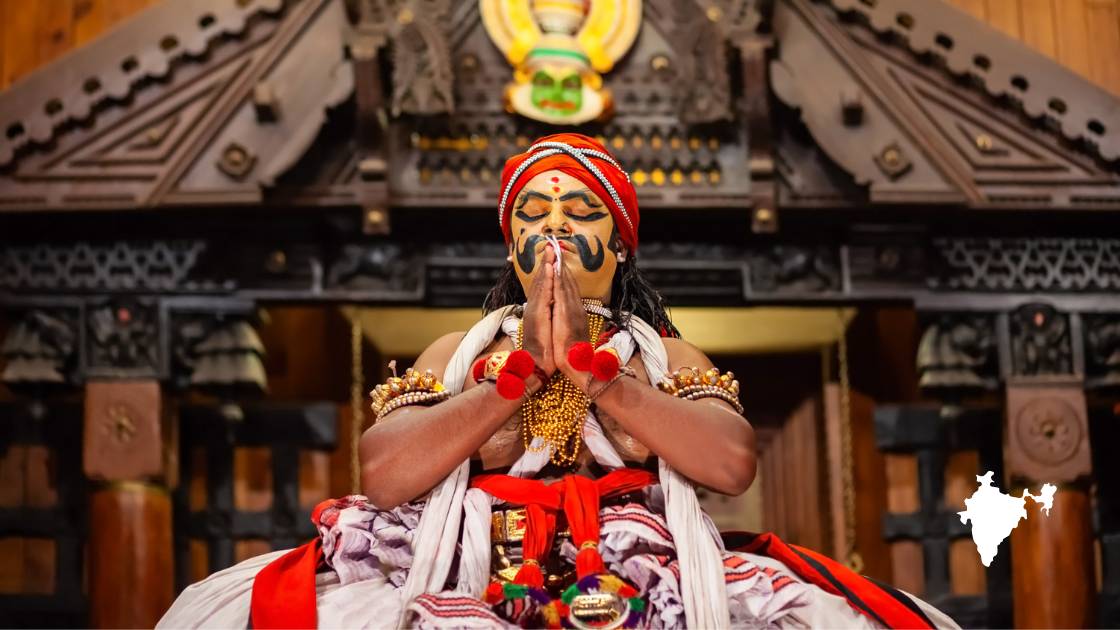
People and Culture of India
People and culture of India have gained worldwide recognition. The customs and traditions of India are often regarded as diverse and unique. However, we rarely contemplate the reasons behind these specific practices. Indian culture is rich in numerous distinctive customs and traditions that may captivate outsiders. Many of these customs and traditions have their roots in the ancient scriptures and texts of India, which have shaped the way of life in the country for thousands of years. India, often referred to as the land of diversity, is a captivating mosaic of traditions, languages, religions, and lifestyles.
Its vibrant culture is a reflection of its long and complex history, shaped by a myriad of influences over thousands of years. Let’s delve into the fascinating world of People and culture of India, exploring its various facets. India has a population of over one billion people, making it the second most populous country in the world after China. Approximately 70% of the population resides in rural areas. Mumbai, formerly known as Bombay, is the most densely populated city with approximately 12 million residents, followed by Delhi with 11 million, Bangalore with eight million, and Hyderabad with six million.
Diversity of People:
India is home to one of the most diverse populations in the world, comprising people from various ethnicities, linguistic backgrounds, and religious beliefs. From the snowy peaks of the Himalayas to the sun-kissed beaches of Kerala, every corner of India boasts its own unique set of people with distinct customs and traditions.
Languages and Literature:
With over 22 officially recognized languages and hundreds of dialects, India is a linguistic paradise. Each language carries with it a rich literary heritage, spanning ancient epics, timeless poetry, and modern prose. From Sanskrit classics like the Mahabharata and Ramayana to contemporary works by renowned authors like Rabindranath Tagore and Arundhati Roy, Indian literature reflects the depth and breadth of human experience.
Religious Pluralism:
India is a land where people of different faiths coexist harmoniously, making it a shining example of religious pluralism. Hinduism, Buddhism, Islam, Christianity, Sikhism, and Jainism are among the major religions practiced here, each contributing to the colorful tapestry of Indian spirituality. Festivals like Diwali, Eid, Christmas, and Baisakhi are celebrated with equal fervor, transcending religious boundaries and fostering unity.
Culinary Delights:
Indian cuisine is as diverse as its people, offering a tantalizing array of flavors, spices, and regional specialties. From the fiery curries of the south to the fragrant biryanis of the north, each dish tells a story of tradition and innovation. Staples like rice, lentils, and spices form the backbone of Indian cooking, while street food delights like chaat, samosas, and dosas tantalize the taste buds of locals and tourists alike.
Traditional Arts and Crafts:
India has a rich tradition of artistic expression, with its artisans creating exquisite handicrafts that showcase unparalleled skill and craftsmanship. From intricate embroidery and vibrant textiles to intricate woodwork and pottery, each region boasts its own unique art forms that have been passed down through generations. Traditional dance forms like Bharatanatyam, Kathak, and Odissi, along with classical music genres like Hindustani and Carnatic, add to the cultural tapestry of the nation.
Family and Community Values:
Family plays a central role in Indian society, serving as the cornerstone of support and identity. Respect for elders, strong social ties, and a sense of collective responsibility are deeply ingrained values that shape interpersonal relationships. Weddings, festivals, and religious ceremonies are often celebrated with grandeur, bringing families and communities together in joyous harmony.
Festivals and Celebrations:
India is a land of festivities, with a calendar packed full of vibrant celebrations that reflect its cultural richness and diversity. From the colorful revelry of Holi, where people douse each other in bright hues, to the spiritual fervor of Kumbh Mela, where millions gather to bathe in sacred rivers, each festival offers a unique glimpse into the heart and soul of India. Navratri, Durga Puja, Pongal, and Onam are just a few examples of the myriad celebrations that dot the Indian calendar, each with its own customs, rituals, and significance.
Traditional Clothing:
Indian attire is as diverse as its culture, with each region boasting its own distinctive styles and garments. From the regal elegance of the saree to the vibrant hues of the salwar kameez and the graceful drapes of the dhoti, traditional clothing reflects both regional identity and cultural heritage. Embroidery, weaving, and embellishments are often intricate and painstakingly crafted, adding to the beauty and allure of Indian attire.
Spiritual Heritage:
India’s spiritual legacy is unparalleled, with ancient texts like the Vedas, Upanishads, and Bhagavad Gita laying the foundation for philosophical inquiry and spiritual exploration. Yoga and meditation, born in the ancient ashrams of India, have gained global recognition for their profound impact on physical and mental well-being. Sacred sites like the temples of Varanasi, the mosques of Delhi, and the gurudwaras of Amritsar draw pilgrims from far and wide, seeking solace and enlightenment in the divine.
Traditional Medicine and Healing Practices:
India has a long history of traditional medicine systems like Ayurveda, Unani, and Siddha, which emphasize holistic healing and the balance of mind, body, and spirit. Herbal remedies, massage therapies, and dietary practices are integral components of these ancient healing traditions, offering natural alternatives to modern medicine. Ayurvedic resorts and wellness retreats have gained popularity worldwide, attracting seekers of health and rejuvenation to the tranquil landscapes of India.
Folklore and Mythology:
Indian folklore is a treasure trove of myths, legends, and epic tales that have been passed down through oral tradition for centuries. Stories of gods and goddesses, demons and sages, heroes and villains populate the rich tapestry of Indian mythology, offering moral lessons and spiritual insights. The Ramayana and the Mahabharata, two ancient epics, are revered as timeless classics that continue to inspire generations with their timeless wisdom and universal themes.
Modern Influences:
While India takes pride in its ancient heritage and traditional values, it is also a dynamic and rapidly evolving nation that embraces modernity with open arms. Cities like Mumbai, Delhi, and Bangalore are bustling hubs of innovation and entrepreneurship, driving technological advancements and economic growth. Bollywood, India’s prolific film industry, captivates audiences worldwide with its colorful musicals and compelling storytelling, blending traditional themes with contemporary sensibilities.
Conclusion:
People and culture of India is at the core of its beauty, which goes beyond borders and captivates the imagination. The people, with their diverse cultures, languages, and traditions, create a vibrant tapestry that reflects the country’s rich history and heritage. From the majestic Himalayan mountains to the picturesque coastal villages, India welcomes everyone with open arms, offering its warmth and hospitality. India is a place where spirituality and modernity converge, offering solace to the soul and excitement to the adventurous.
The festivals awaken the senses, the cuisine delights the taste buds, and the artistry mesmerizes the eyes. However, beneath the surface, India is a timeless tale of strength, harmony, and the everlasting strength of human bonds. India’s beauty can be found in every corner of this expansive and marvelous country, where stories are waiting to be shared, melodies are waiting to be sung, and dances are waiting to be performed. The country’s charm is not limited to its historical sites and natural scenery, but also resides within the hearts and minds of its people. They embrace their cultural heritage while embracing progress and moving towards the future.
Frequently Asked Questions (FAQs)
1. What culture lives in India?
India is a mosaic of cultures, with Hinduism forming the predominant influence alongside significant Muslim, Sikh, Christian, Buddhist, Jain, and tribal cultures. This diversity is further enriched by the unique traditions, languages, and practices found in each of India’s diverse regions and states.
2. What are the traditional arts and crafts of India?
India boasts a rich tradition of arts and crafts, encompassing pottery, textiles (such as silk and cotton weaving), embroidery (like the famous Kashmiri and Lucknowi embroidery), painting (such as Madhubani and Tanjore painting), metalwork, woodwork, and sculpture.
3. What are some famous festivals in India?
India celebrates a variety of festivals throughout the year, including Diwali (Festival of Lights), Holi (Festival of Colors), Eid, Christmas, Durga Puja, Navratri, Raksha Bandhan, and Baisakhi.
4. What is the significance of family in Indian culture?
Family plays a central role in Indian culture. It typically extends beyond the nuclear family to include extended relatives. Respect for elders, strong familial bonds, and the concept of joint families are significant aspects of Indian family life.
5. What is the importance of food in Indian culture?
Food holds great cultural significance in India. Indian cuisine varies greatly from region to region, with each region having its own unique dishes and flavors. Spices, herbs, and diverse cooking techniques characterize Indian cuisine, which is known for its rich flavors and variety of vegetarian and non-vegetarian dishes.
6. What are some traditional Indian dances?
India is famous for its various dance forms, each having its own distinct style, costumes, and music. Some well-known classical dances include Bharatanatyam (from Tamil Nadu), Kathak (from North India), Kathakali (from Kerala), Odissi (from Odisha), Kuchipudi (from Andhra Pradesh), and Manipuri (from Manipur).
7. What is the importance of religion in Indian society?
Religion is deeply intertwined with Indian society and culture. It plays a significant role in shaping traditions, festivals, rituals, and daily life practices. India is known for its religious tolerance and pluralism, with people of different faiths coexisting harmoniously.


